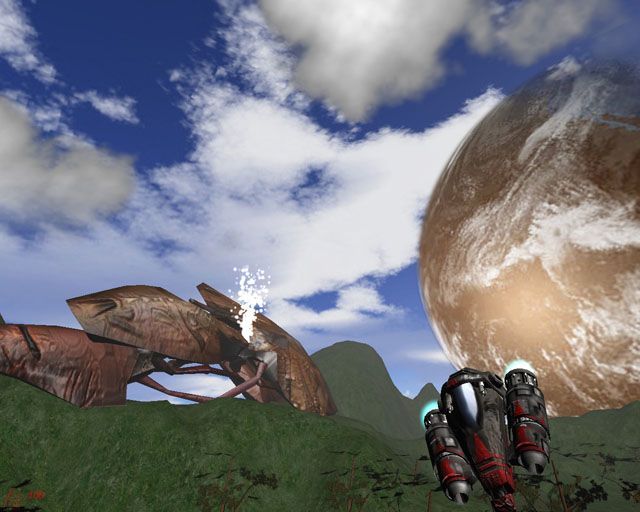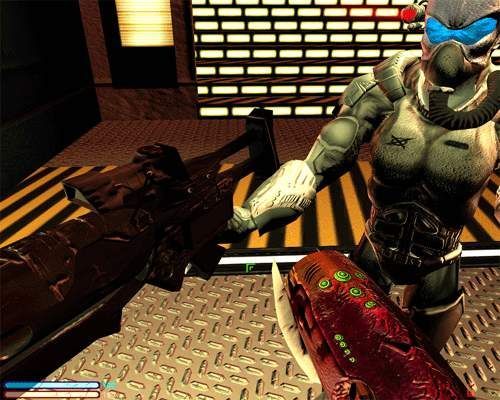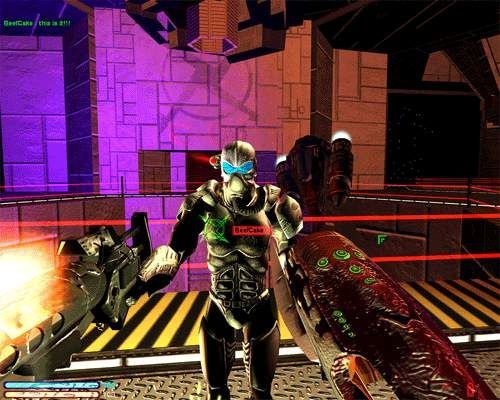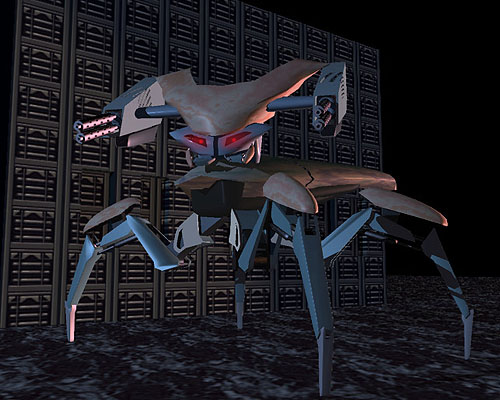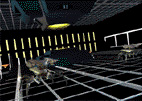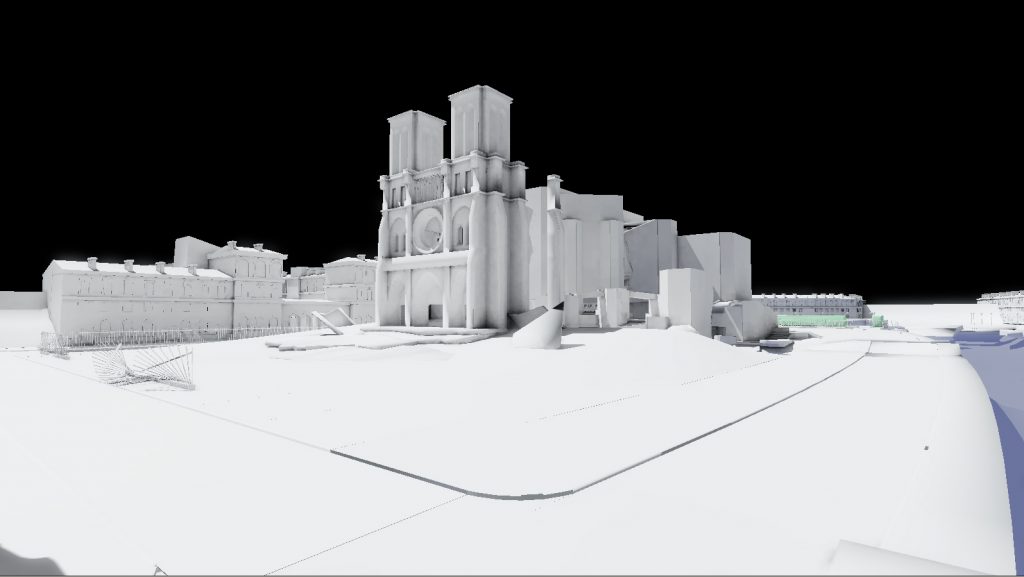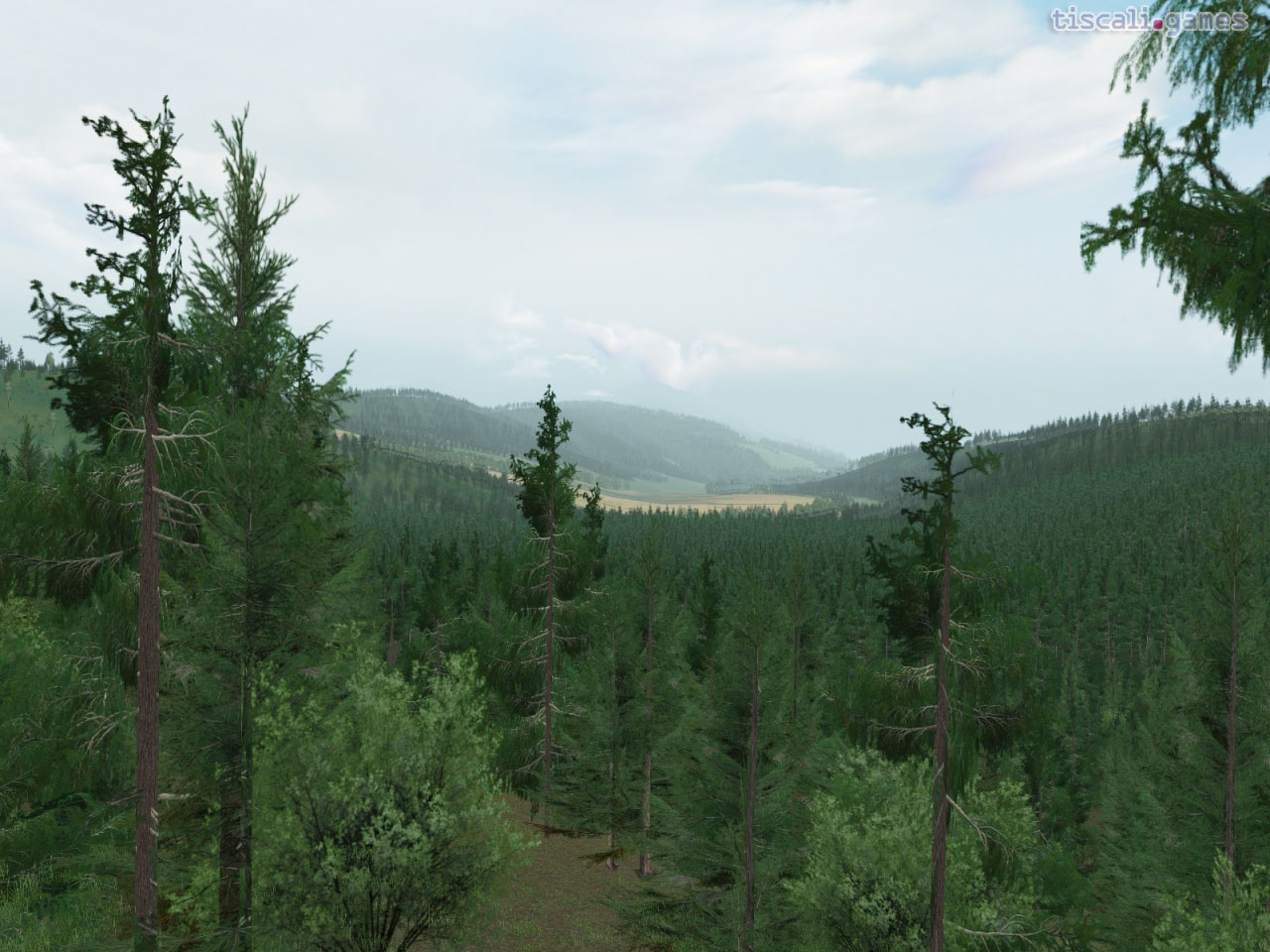Helix Core is a cancelled online sci-fi FPS that was in development around 2002 – 2003 by Bright Light Productions, planned to be released for PC. Its main focus was the high number of players who could frag together in a single arena: up to 64 players. This was worked on 8 years before MAG and its 256-players deathmatch, or 13 years before PlanetSide 2’s 1158 simultaneous players: at the time it was quite an ambitious feature for Helix Core.
As we can read from the official press-release:
“In Helix Core, you and 63 of your friends engage in a massive multi-theatered struggle across the universe! Helix Core seamlessly blends gritty team-oriented First Person Shooter warfare with dramatic vehicular action, layering the combat with a powerful strategic component. Fight on foot, and in ship, on land and in space as you work to accomplish mission objectives in epic dynamically scripted levels. As you try to defeat the other team in any of the game’s vast environments, you’ll cooperatively pilot over 20 vehicles ranging from single-person nimble Starfighters to massive multi-personnel Capital Ship behemoths. Teamwork is key as you collectively earn credits for each small victory over your opponents, allowing Players to pool their resources to buy bigger, better technology for their forces.
In Helix Core, you’re not just a grunt. You’re a pilot, a spy, an engineer, a tactician — a combat-hardened soldier of a dark future. In Helix Core’s gothic sci-fi universe where “good” no longer exists, a fascist government combats a ghost of the past, and the only sure thing is bloodshed. Vengeance, hatred, betrayal — all are weaved together in the midst of this terrible struggle surrounding you. Ideas do not come in black and white anymore, there are no rights and wrongs — only greys.”
An interview was also published on VGInsider:
“VGI: Can you tell us a little about how the vehicular portion of the game will work?
Jeremy: A lot of the ships/vehicals in the game require cooperation. You can have a Capital Ship that can fit 20 players in it. Once you load it up, you can take the behemoth out, and your turret gunners can make mince meat out of their opponents. Eventually you make your way to the enemy base in this moving battlefortress. Without teamwork though, it will be very difficult to make your way to the enemies headquarters. That is why we are going to have up to 64 players in each game. In a game like Tribes, most of your vehicles are limited to 3 or 4 people tops, which leads to a very unstructured experience, and people don’t really have much of a way to cooperate in real game mechanics. Helix Core will change all of that.
VGI: I am just wondering, what kind of servers will be required for a concurrent 64 members on at one time, it seems like a lot of computer power would be needed (Counterstrike limits to 21 or 20) and it also seems like bandwidth. Do you think latency will be a problem?
Jeremy: 64 players is for people with the most powerful of systems, that’s for sure. I wouldn’t recommend a 64 player game to people who barely meet the minimum requirements for the game. We figure the typical game will hold 32 players or less.
VGI: That is great to hear. Console gaming is more popular than ever, if Helix Core went over well on the PC, could you see it on say. . .Xbox?
Jeremy: If there’s any console that could do Helix Core, it would certainly be the Xbox, because it’s graphic capabilities are essentially that of the GeForc3, one of our target cards. Although on Xbox there would be those damned online fees. . .
Tim: Honestly, PC is where it’s at for now. Who knows though, it all depends on how well HC goes over on the PC. Console gaming would definitely be where we’d look next, before moving on to another game.
VGI: You could always port it to the Dreamcast! :-)
Jeremy: Dreamcast eh? Hell yeah — then you wouldn’t have to pay any fees. ;-)”
And some more details from their old website:
“Players can walk up to any space flight vehicle, ranging from nimble starfighters to huge multi-personnel battlecruisers and Capital flagships, and take control of it in the multiplayer environment to cooperatively aid their team. Analogous to the many starship types available for flight (in both space and planetside missions), there are 5 player classes for each of the two races that emphasize different game styles and player skills. Your class determines what weapons you can use, but also gives you special abilities that makes certain aspects of the game more suitable for your character — say, piloting, heavy combat, or starbase defense construction.
Missions in Helix Core are objective-oriented & story-oriented, depicting the chronological course of a vast interstellar military conflict between a fascist government and a tortured foe from long ago. Each mission, in addition to having a backstory in the cinematic universe of the game, is different in scope and gameplay — one particular mission has one team staging an Alamo-style last stand for a period of time, while another is a two-way base assault on land and air, whereas a certain mission is a race to reach a remote in a treacherous hostile region of space.
In Helix Core, you’re not locked in combat in some phony hallway in the middle of nowhere, you’re in a location on a massive battle spacestation in a greater battle of an epic war. Your teammates outside are cooperatively piloting starships both small and huge in an effort to keep the supply lines open and ensure that your Space Station Assault succeeds. On both land and in space, foot and flight, the future of cooperative multiplayer team gaming is Helix Core. Be a pilot, be a grunt, be a real-time strategy tactician: The choice is yours, and the battlefield awaits you!”
Around 2002 – 2003 there were also a couple of videos on their website, but unfortunately they seem lost forever.
In 2003 Helix Core vanished and today there are no more details available about the team or their projects. It seems Helix Core was reworked by some of its devs and resurfaced in September 2004 under the name of Cry Havoc. It became a FPS/RTS game, but in the end it was also canned. By looking at screenshots and previews Cry Havoc sounded much different from the original Helix Core concept, so we may have another page on Unseen64 to remember it.
Thanks to Daniel Nicaise for the contribution!
Images:

